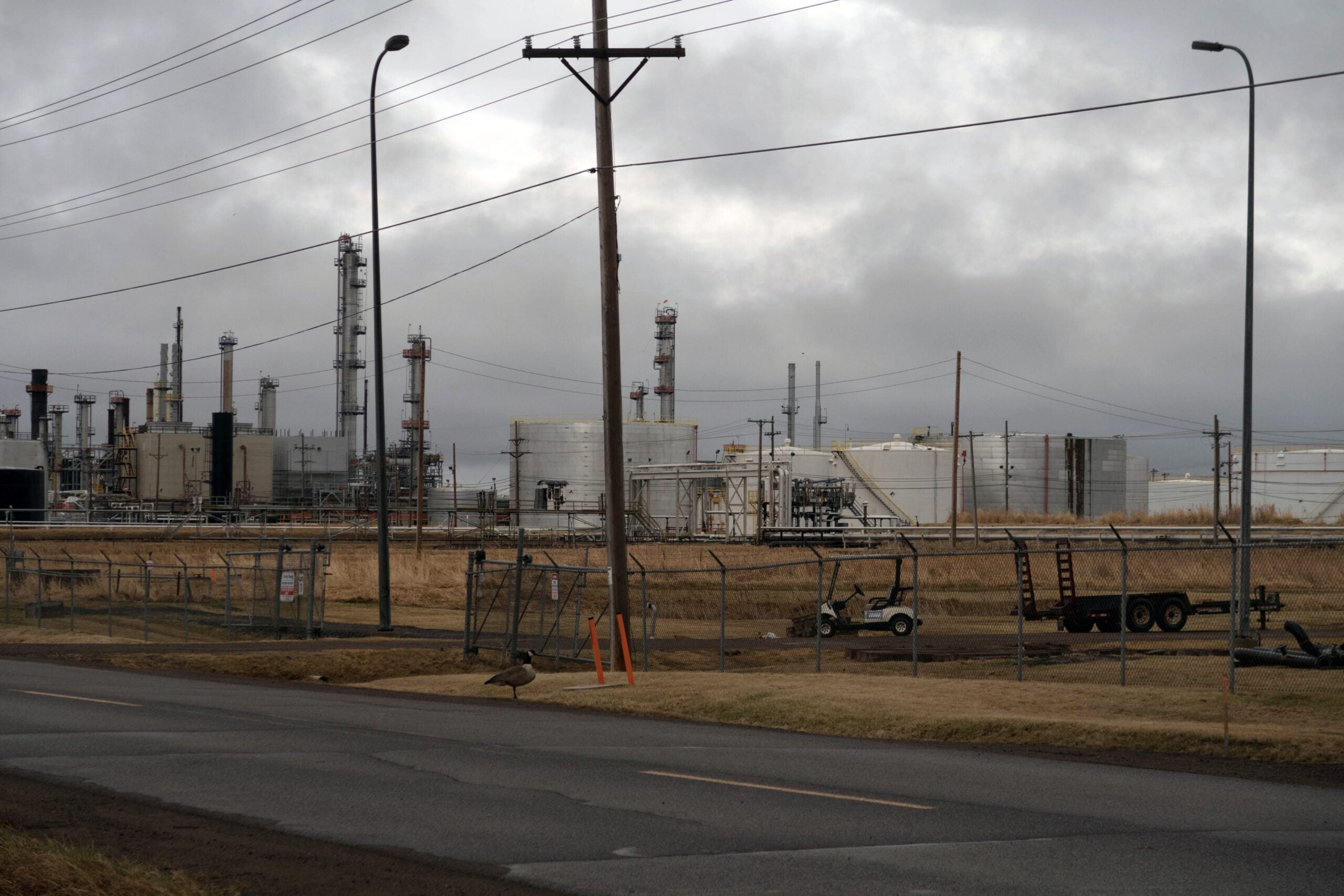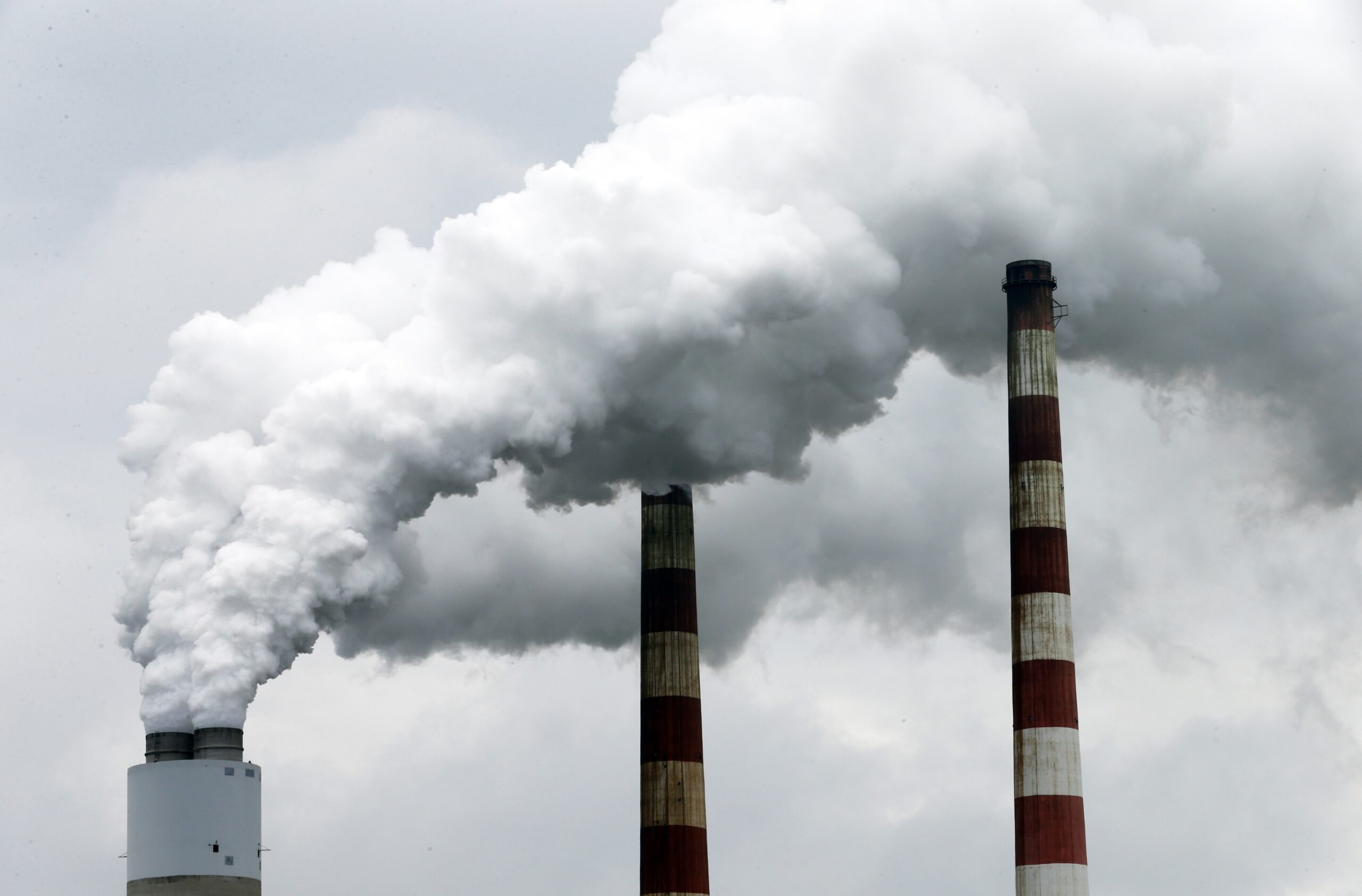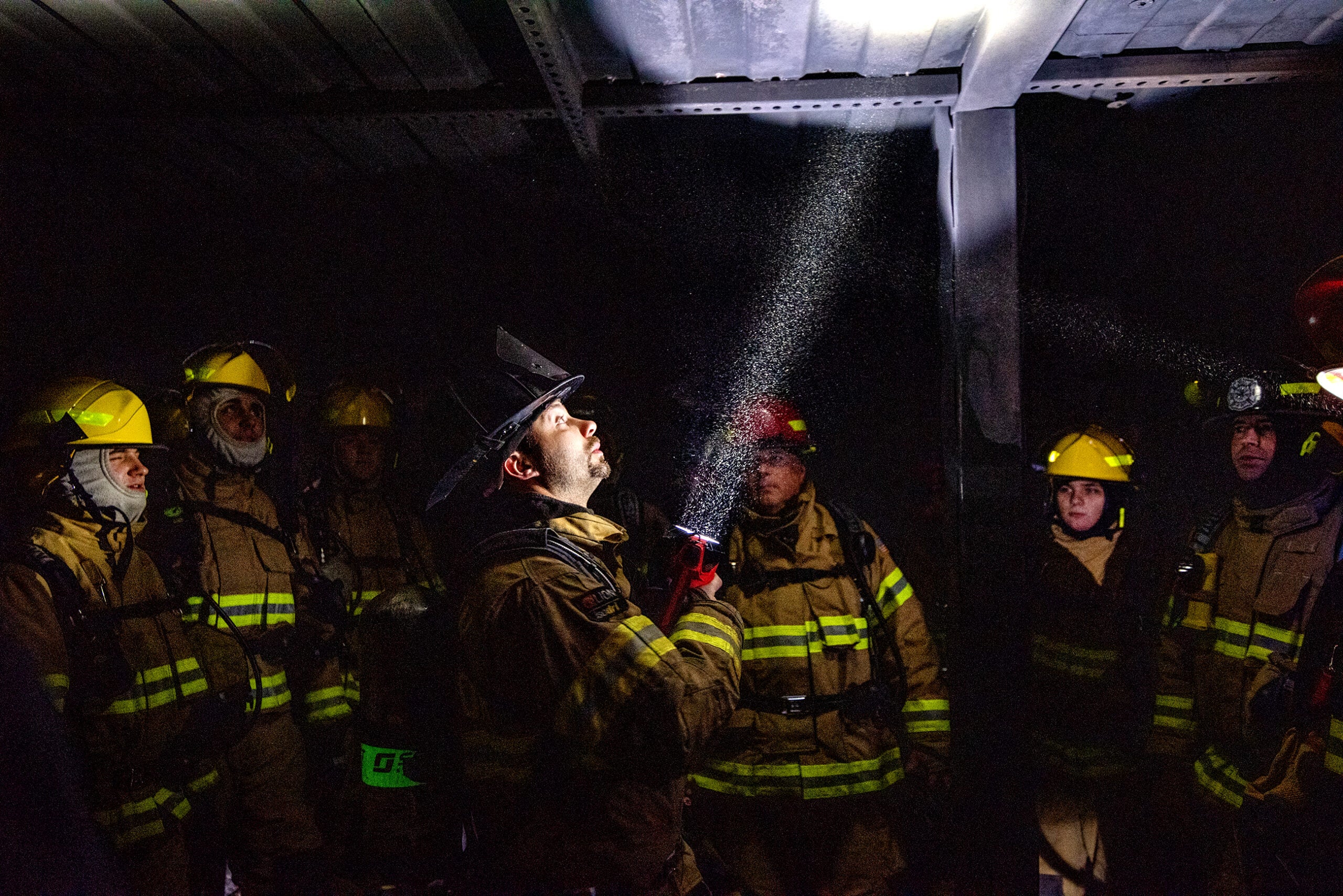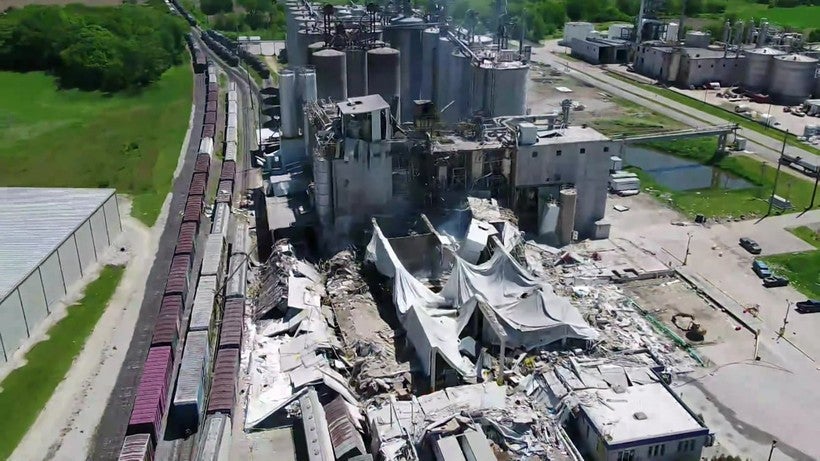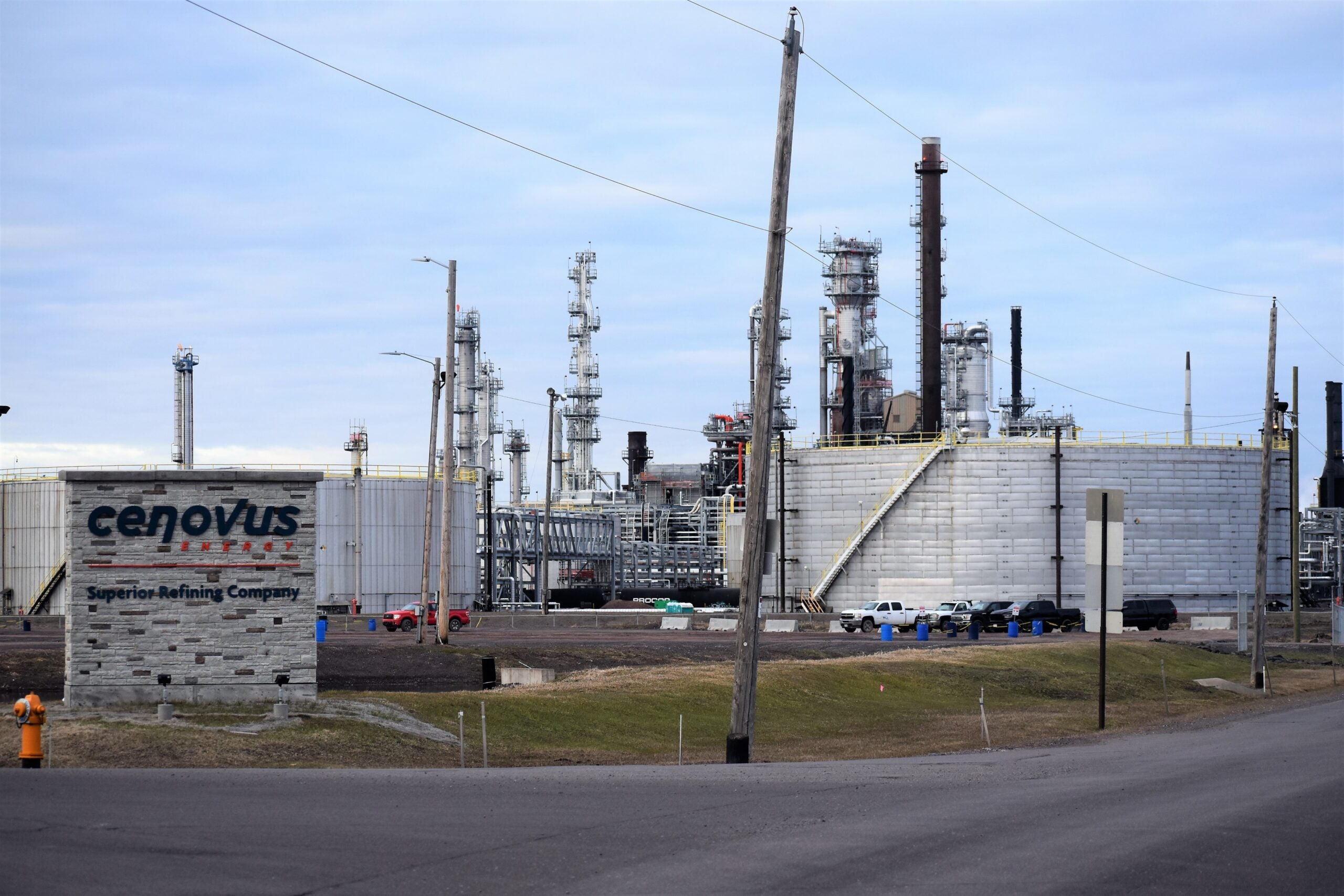State and federal officials continued working on Saturday to monitor air and water quality around the site of Thursday’s refinery explosion and fire in Superior.
The explosion injured at least 20 people, and the subsequent fire sent plumes of noxious smoke into the air and prompted an evacuation order for thousands of people in Superior and the surrounding area.
Stay informed on the latest news
Sign up for WPR’s email newsletter.
On Saturday, the Wisconsin Department of Natural Resources reported that air quality in the area was “improving.”
“Since the fire was put out, data shows that there are no elevated levels of chemicals monitored,” the Wisconsin DNR reported in a news release.
The DNR said that particulate levels have returned to normal levels. The U.S. Environmental Protection Agency and refinery officials have been conducting air monitoring.
Meanwhile, a team from the DNR was monitoring the water in a nearby creek and other waterways for any possible runoff from firefighting efforts.
“The company has placed booms in the creek to control any potential runoff,” DNR officials said. “No fish kills have been reported so far.”
The DNR will continue to oversee surface water sampling, as well as soil clean-up.
Husky Energy spokeswoman Kim Guttormson said via email Saturday that the company is continuing to secure the refinery site, and that teams investigating the explosion and fire will begin their work once that happens.
Guttormson said it was still too early to determine when cleanup work would begin.
Firefighters from the city of Superior said cooperation with Husky Energy crews and training helped them deal with the dangerous situation on Thursday. The explosions and fire in an asphalt tank threatened another tank nearby containing a chemical that could have released an acidic cloud.
Mike Hoyt, a captain with the Superior Fire Department, said the Husky responders worked to keep a tank with hydrogen fluoride and another container of chemicals from breaching. They used what Hoyt called a “deluge system.”
“They got that up and running in order to protect those two units, or those two systems,” he said. “Because the greatest thing is to protect the public and protect it from the most harmful things on site, and that would be one of it.”
Hoyt said 35 firefighters responded from the Superior department, the entire firefighting staff in town at the time.

